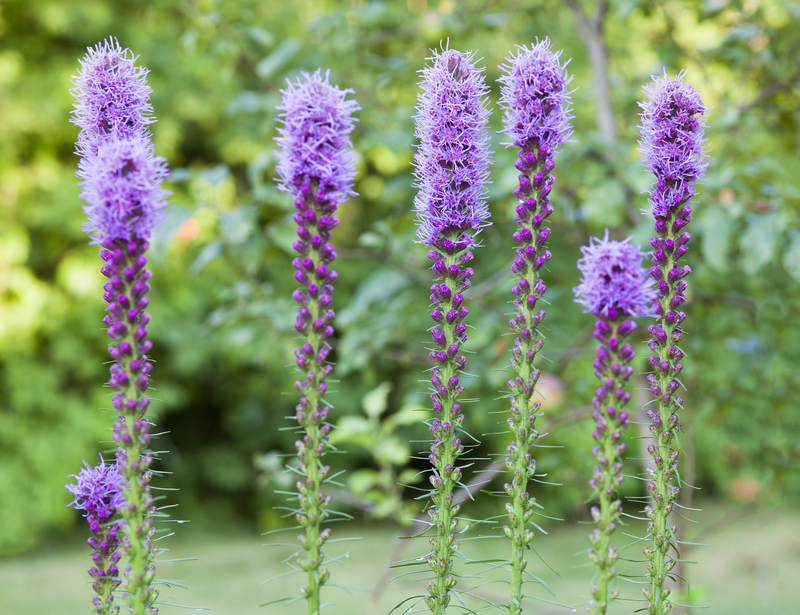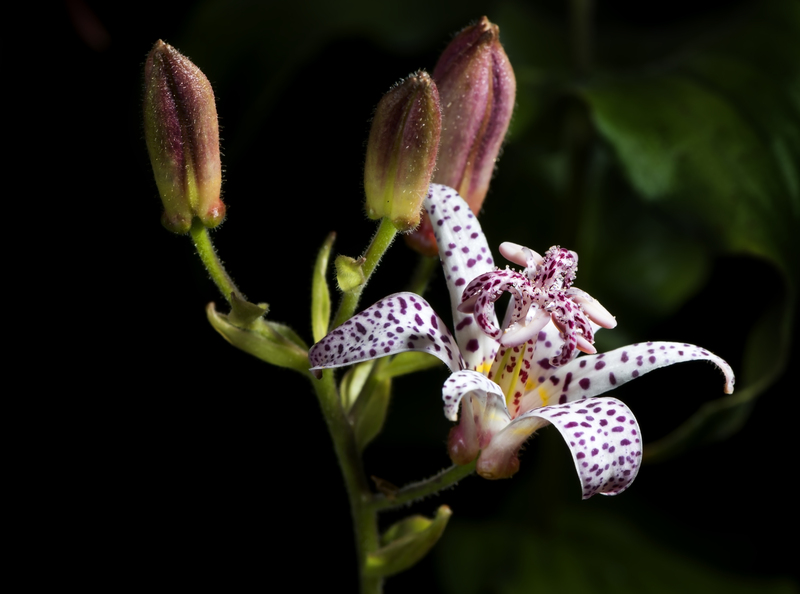The Sculptor's Guide to Hedge Trimming
Posted on 04/09/2025
The Sculptor's Guide to Hedge Trimming: Mastering Artistic Garden Topiary
Transform your garden into a living masterpiece! Discover the expert techniques, tools, and timing needed for hedge sculpting perfection in this comprehensive guide to artistic hedge trimming. Whether you seek crisp edges, whimsical shapes, or organic green architecture, this article will nurture your skills from beginner to hedge artist.

What is Hedge Sculpting?
Hedge sculpting--also known as topiary--is the art of trimming and training the foliage and branches of hedges or shrubs into clearly defined shapes or intricate, imaginative figures. While standard hedge trimming aims to maintain neat boundaries, hedge sculpting embraces creativity and transforms gardens into verdant art galleries. Think of sculptors working with marble, clay, or wood; hedge sculptors do the same, but their medium is living, breathing greenery.
Why Practice Hedge Trimming as a Sculptor?
- Enhance curb appeal: Eye-catching green sculptures instantly upgrade any landscape.
- Personal expression: Your garden becomes a canvas to showcase artistry and imagination.
- Wildlife sanctuary: Dense, creatively trimmed hedges offer safe habitats for birds and insects.
- Therapeutic hobby: The rhythmic nature of trimming and shaping boosts mindfulness and relaxation.
Choosing the Right Plants for Hedge Sculpting
Not all shrubs are suited for this artistic hedge trimming. The ideal candidates have small leaves, dense growth, and respond well to frequent pruning.
Top Hedge Plants for Sculpting
- Boxwood (Buxus sempervirens): Classic for formal topiary, it handles shearing well.
- Yew (Taxus): Versatile and robust for elaborate shapes and longevity.
- Privet (Ligustrum): Fast grower and forgiving to mistakes, ideal for beginners.
- Holly (Ilex): Glossy foliage and good structure for geometric forms.
- Lonicera nitida: Compact growth with tight, small leaves for detail work.
- Alternatives: Japanese holly, euonymus, myrtle, or even lavender for scented artistry!
How to Select the Perfect Plant
- Choose
healthy specimens with multiple strong shoots and no signs of disease. - Check for
compact, bushy shapes as their structure provides an ideal base to sculpt. - Select
evergreens for year-round interest; deciduous shrubs will lose their form in winter.
Essential Tools for Hedge Sculptors
The right hedge trimming tools bring precision and creativity to your work. Invest in quality, maintain them well, and you'll notice a dramatic difference in the clarity and health of your designs.
Must-Have Hedge Sculpting Tools
- Hedge Shears: Long blades for smooth, even cuts across large surfaces.
- Topiary Clippers: Short blades for detailed, snipping work and shaping small curves.
- Secateurs: For removing thicker branches without damaging main stems.
- Electric or Battery Trimmers: Useful for major shaping on big hedges but use sparingly for fine detail.
- Shaping Frames or Wire Guides: Great for beginners to outline complex forms or geometric shapes.
- Protective Gear: Gloves, eye protection, and sturdy boots for safety.
Maintaining Your Tools
- Keep blades sharp to ensure clean cuts and prevent plant disease.
- Remove sap with alcohol wipes to stop blades from sticking.
- Regularly oil moving parts for smooth, fatigue-free work.
Planning Your Hedge Sculpting Project
Preparation sets the stage for stunning results!
- Decide on a design: Research shapes--from formal balls and cones to spirals, animals, or whimsical patterns. Sketch your vision before cutting.
- Assess the hedge: Ensure it's healthy, well-established, and adequately hydrated. Weak or sparse shrubs won't support intricate designs.
- Clear the site: Remove deadwood, debris, and any competing undergrowth.
- Mark the shape: Use string, chalk, or wire frames to outline your sculpture, especially for complex forms.
Popular Hedge Shapes for Every Sculpture Artist
- Geometric: Spheres, cubes, cones, pyramids, and rectangular panels.
- Animal Topiary: Birds, elephants, peacocks, and more--limited only by your creativity.
- Abstract: Swirls, waves, and organic forms for contemporary gardens.
- Archways & Labyrinths: Living green tunnels and maze-like designs for grand entrances.
- Lettering & Emblems: Personalize with initials, house numbers, or emblems.
The Art and Science of Hedge Trimming
When is the Best Time for Artistic Hedge Trimming?
Proper timing is crucial in hedge sculpture for both plant health and crisp results:
- Late Spring or Early Summer: Trim after the main flush of growth for the year; avoid disturbing nesting birds.
- Late Summer: Light sculpting to tidy up growth in preparation for winter.
- Avoid Frost: Don't cut in freezing conditions--damage to new growth and possible dieback.
Tip: Some hedges need two or more trims each season to maintain detailed designs!
Step-by-Step: How to Sculpt a Hedge like an Artist
- Sanitize your tools to prevent the spread of disease.
- Remove large branches and unwanted shoots using secateurs.
- Establish an outline along your guide string or frame.
- Trim top-to-bottom for geometric shapes, maintaining symmetry as you go. Step back frequently.
- Clip in stages: Remove small sections at a time. You can always take more off; you can't add it back!
- Clean up edges for a sharp, defined look.
- Detail work: Use topiary clippers to create fine curves, sharp points, or delicate textures.
- Step back often: View your work from several angles for overall balance and adjust as needed.
Remember--patience and practice are your greatest tools!
Techniques Every Hedge Sculptor Should Know
Layered Trimming for Shape Depth
Create three-dimensional forms by developing depth. Start with a rough shape, gradually refining the contours. Use light, progressive snips--a heavy cut can't be undone!
Maintaining Sharp Corners and Smooth Curves
- For curves: Glide shears in a gentle rocking motion, always curving with the plant's natural form.
- For straight lines: Use string or a board as a guide; step back to check the alignment frequently.
- For corners or points: Angle your blades and use smaller clippers for precise control.
Shaping Spirals, Animals, and Abstracts
- Spirals: Begin at the top and gently wind your way downward, thinning as you go.
- Animals: Use wire forms or frames as a guide; trim within the framework at first, then refine.
- Abstracts: Let the plant's natural habit inspire irregular, flowing forms; aim for balance and proportion.
Common Hedge Sculpting Mistakes and How to Avoid Them
- Over-pruning: Taking off too much weakens the plant. Always err on the side of caution.
- Ignoring plant health: Diseased or pest-damaged foliage will ruin the neatness of your design.
- Uneven cutting: Step back and inspect from all angles to keep symmetry and balance.
- Poor tool maintenance: Dull blades cause ragged cuts and damage hedges.
- Forgetting sun exposure: If you remove too much foliage on one side, you might scorch inner leaves.
Advanced Tips for Master Hedge Artists
- Experiment with layer planting: Combine different species for multicolor, textural sculptures.
- Integrate flowering topiary: Choose hedges with small, showy blooms for added seasonal interest.
- Lighting effects: Use garden lighting to highlight your green sculptures at night.
- Mist for moisture: Regular water misting prevents browning and highlights the sculpture's structure.
Caring for Your Sculpted Hedges
- Feed each spring with a slow-release fertilizer for greener, denser growth.
- Regularly water during hot, dry spells--sculpted hedges have less leaf surface to capture rain.
- Watch for pests and fungal diseases; prune away affected areas promptly.

Hedge Sculpting for Small and Large Gardens
Even if your garden is small, you can enjoy the pleasure of hedge artistry! Choose one or two key shapes as focal points--a single spiral, ball, or animal makes a huge statement. In large gardens, combine multiple forms or create dramatic "living walls" to define spaces and lead the eye through the landscape.
Container Topiary: Sculpting in Miniature
Don't have garden space? Hedge trimming principles work beautifully in pots, allowing for patio or balcony artistry. Opt for slower-growing dwarf species and keep the designs simple--a spiral or ball is ideal.
Conclusion: The Sculptor's Guide to Artistic Hedge Trimming
Hedge sculpting transforms the ordinary into the extraordinary. With the knowledge in this guide, you're equipped to design, trim, shape, and maintain dazzling green sculptures that showcase your creativity and skill.
- Start small-- perfect a shape before tackling complex forms.
- Invest in good tools-- precision is everything for crisp, professional results.
- Respect your plant's health-- patience and gentle pruning yield long-lasting beauty.
- Let your garden reflect your imagination!
So pick up your shears and bring your dream garden to life. The power of hedge artistry is in your hands! Happy sculpting!
Further Reading and Resources
- Royal Horticultural Society: Hedges
- Garden Design: Topiary and Hedge Sculpting
- BBC Gardening: Pruning Hedges
If you enjoyed this sculptor's guide to hedge trimming, share your own topiary triumphs in the comments below! For more gardening artistry tips and inspiration, subscribe to our newsletter.



